Most of the Indie book contests, like the Benjamin Franklin Awards, IPPYs, Indie Excellence, and all the rest, are closed for the year. The books have been submitted and they’re being judged. Will your book win? Two factors have a very large weight in determining whether you walk away a winner––or get passed up: Your COVER and your TITLE. Today we’re going to talk about book cover design. While it may be late if you’ve got books in competitions this year, you can use what follows for future years.
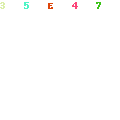
[The original of this article is illustrated with beautiful book covers by Lewis Agrell. They don’t up on this site. Please go to Your Shelf Life.com to see the covers. "It May Be Forever" Cover by Lewis Agrell appears here. I love this cover!]
I’m very pleased to introduce my second guest blogger, Lewis Agrell of The Agrell Group. Lewis and I go back years. He designed promotional materials for my first book, Stepping Off the Edge. I loved what he did and called on him to do the same for Numenon. Lewis designed a one-sheet for Numenon, book marks, and a gorgeous over-sized post card. He also designed the e-book that I’ve been giving out to those who sign up for my email newsletter. And his wife, Kathryn, edited it. What a team!
I think this blog is going to be known as the “get deep into the psychological underpinnings of writing & publication” blog. Irene Watson of Reader Views introduced us to Jungian personality type. I added a bit, and now Lewis is going to introduce concepts that I learned originally in graduate school in counseling.
Knowing these concepts is very important: They’re operating in your buyers’ minds and souls (and yours) whether you know it or not. Better to know it. But don’t worry! Lewis Agrell makes them user friendly!
Lewis has been kind enough to let me illustrate the blog post with some of his covers. And now, here’s Lewis Agrell on book cover design:
WHAT MAKES A GOOD BOOK COVER DESIGN?
In my estimation, the best covers are the ones that are the most beautiful. Billions of dollars are spent every year in advertising, fashion and manufacturing to infuse more and more beauty. Why? Because beauty attracts the eye. That’s why the most beautiful models, actresses, cars, houses and boats cost the most money. Beauty is a precious, treasured commodity. Beauty has specific qualities. These qualities are harmony, balance, unity, synthesis, and refinement. Designers struggle to make the colors and design elements (fonts, photos, illustrations, and other graphic elements) work in such a way that the greatest beauty is attained.
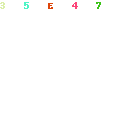
[Cover shown on YourShelfLife.com: KILLROD The Cross of Lorraine Murders. Cover by Lewis Agrell. Simple, elegant, & beautiful design employing archetypes––the cross and circle, which also looks like a moon. Love this, too.]
Attributes of the Designer
Why are some designers better than others? This is not a simple question to answer. Designers must be trained in the basics of graphic design, particularly color theory. The other qualities that are necessary are:
- Experience (it helps to have tried many different approaches to design work, and learned what does, and does not, work)
- Intelligence—reading as much as possible about the industry is very helpful, because it is important to stay current, not only with the latest design movements and techniques, but also the tools of the trade (computers and software).
- Worldly awareness: it helps to know what is going on in the world, because world events are often reflected in design work. Witness particularly the dynamics of the sixties and the seventies, when many social shifts occurred. Designers and illustrators exploded with new ways of working, as a reflection of the dynamism of the period.
- Sensitivity. A designer must be sensitive to the material with which he/she is working, as well as to the needs, desires, and expectations of the client.
“As he thinketh…so is he”
An individual’s consciousness can vary tremendously. Wherever a person places the bulk of his attention will indicate the level of awareness. People are generally focused either physically, emotionally, or mentally. It is best for a designer to have as high an awareness level as possible.
Why is this critical? Because a designer, or any creative person, cannot create beyond his or her level of awareness. When a high level of awareness is attained, that individual also has a connection to the lower levels, having passed through them, at some point in his or her maturation.
For example, a designer who is entirely focused on the physical realm, would not do well with a project focused on matters of the heart. A designer who is swept up in the world of emotions, would not do well with a project that has deep philosophical leanings.
In the mental realm, there are three areas of focus:
- The lowest is the subconscious. Designers focused on this level create work that is very dark and mysterious—perhaps even very ugly and horrifying—and certainly distorted and misshapen. The primary color in their palette is black.
- The next mental level is that of the concrete mind. This is the realm of logic and reasoning. This is the area of scientists and mathematicians. The design solution from an artist focused on this level will be very balanced and harmonious. The Golden Ratio, or Divine Proportion (approximately 1.618) might be very important for a designer on this level of consciousness. Someone who has a mental focus labors very carefully to determine a proper approach, utilizing logic, reasoning and analysis.
- The highest level is known as the superconscious. In this level, symbolism is very important to the designer. Also, the designer will use a palette of very bright, cheerful, and uplifting colors. The keys to identifying designers who work on this level are a) their work reflects a wide variety of creativity or understanding; and b) they generally “know” immediately what the best solution will be for various projects. The “Eureka!” moment is very common for these designers. They will usually have a vivid mental image in mind before a person finishes explaining a concept to them. They think very quickly.
Many designers specialize in one particular area. This is because they have a strong physical, emotional, or mental strength, and design in that area.
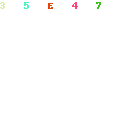
[Cover shown on YourShelfLife.com: "The Money Belt" This is not a "grunge" cover. Great for mass market book. I love this cover: clean, catchy, powerful. Does the job!]
The “grunge” look
If beauty is so important, why is there a “grunge” movement? The reason for this may be a temporary backlash to the “perfection” that can be created by computers. A world saturated with the unwavering perfection that computers are capable of creating can become a bit maddening to designers who like to put a more human touch to their work, so designers are fighting against the coldness of computers with “grungy” designs—those that appear as though they are not created from the computer, even thought the computer remains an indispensable tool for production.
This will become overused and will be rejected in time, in the same way that the psychedelic look passed away at some point in the early seventies. Great beauty will always be the sine qua non for designers. Deviations from beauty are only a temporary stylistic meandering. For example, ugliness will never gain a foothold in auto manufacturing because of the importance of high volume sales. When one particular car was created that people thought was not beautiful (the Edsel, 1958), the car sales were dismal. Car manufacturers don’t want a repeat of that noted failure.
What catches the eye besides beauty? Newness and uniqueness. An example of this is reflected in the story of the designer who needed to create a new cereal box to be displayed in grocery stores. He saw that all of the boxes had bright, vibrant colors. So, what did he chose to do? He created a cereal box that was mostly white. This “non-color” stood out from the rest of the boxes on the shelves, gaining that valuable eye-catching quality.
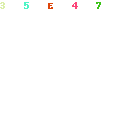
[Cover shown on YourShelfLife.com: "Mediterranean Madness" Cover by Lewis Agrell. In a genre cover, the designer must give readers what they expect. Wow, and good design.]
Genre design
There are genres of books that have a “standard look,” that the buyer expects to see, for example, romance novels. All purchasers of romance novels want to see an image of a very strong, handsome, romantic yet masculine man embracing a beautiful woman on the cover of the book. To deviate from this “formula” is to risk loss of sales.
The same is true with fantasy novels. The buyers want to see a careful rendering of a dragon, or some such fanciful creature. Wouldn’t it be odd to see a biography without a painting or photo of the person about whom the book was written? The challenge for the designer, when dealing with these genres, is not a simple one. He/she must create something similar, yet unique and powerful.
How to pick a designer for your book
The easiest way is to examine the designer’s website and see if there is a style that is similar to what you imagine for your book. If you like what the designer has done, but don’t see something that you are looking for, simply send an email to the designer and ask if he/she has done anything similar to what you have in mind. Very often, the designer will have work that is not on the website.
If you still have doubts about the artist’s ability to create what you want, you can always hire the artist to do a concept sketch. If you are less than happy with the concept sketch, you can then either ask for another sketch, listing your desires, or you can thank the designer for his work (be sure to send a check for the hard work!) and then move on to another designer.
Designing your own cover
Don’t do it. That’s my answer to all writers who want to design their own cover. You have put a lot of energy into your book. You want the cover to reflect as much energy and power as your carefully groomed text. The person who can provide that energy and power is someone who is trained in graphic design.
Graphic designers have spent years, or decades, perfecting their art.Keep in mind that they spend eight hours a day, five days (or more) a week, twelve months a year, year in and year out, working to perfect their craft. They have tried and failed, so they know what doesn’t work. They have succeeded, and their work has been tested in the marketplace.
Simply put, they know what they are doing.
You wouldn’t rewire own your house yourself; you’d hire a professional electrician. The same goes for book cover design: Hire a professional. Sure, it can be expensive, but the extra “oomph” that you get in the professional design may translate into an increase in the number of books sold, simply because people are attracted to and impressed with the cover design! To sell the most books, save your pennies and hire the best graphic designer that you can afford. You’ll be grateful that you did when you see the results.
Please, don’t take my word for it. Talk to authors who have used professional designers to create their covers. You might be surprised by what they say.
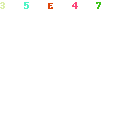
[Cover shown on YourShelfLife.com: "No Sisters Sisters Club", an engaging cover for a Young Adult book.]
Lewis Agrell has been an award-winning professional designer and illustrator for thirty years. He worked as the Chief Artist for the New York Times Company at its largest regional newspaper for ten years. He and his wife, Kathryn (a writer/editor) are the principal owners of The Agrell Group, a graphic design/creative writing firm, located in Prescott, Arizona. To contact them: Lagrell@commspeed.net or Kagrell@commspeed.net Phone: 928.445.7038.
From Sandy Nathan: It’s been a privilege to share Lewis’s thoughts and words with you. Here’s a surprise. You may think that book covers of this quality must be very expensive. Not so. Lewis’s covers––front, back, spine––usually run between $500 and $1,200. You may want to consider him for your next book.
[This article comes from is from YourShelfLife.com. Your Shelf LIfe is about increasing the shelf life of your book––and you. It’s dedicated to sanity and success for authors. This article on book covers is illustrated with gorgeous covers by Lewis Agrell. They aren’t showing up on this site. Please go to Your Shelf Life.com to see the covers.]







